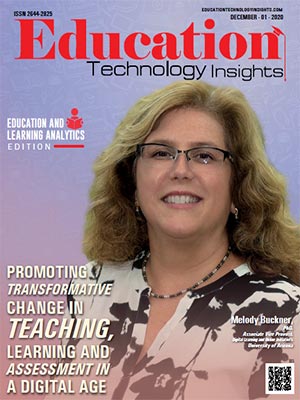THANK YOU FOR SUBSCRIBING
Be first to read the latest tech news, Industry Leader's Insights, and CIO interviews of medium and large enterprises exclusively from Education Technology Insights
Universities Develop Tech Advancements in the Age of COVID-19
Patty Patria, Vice President for Information Technology & CIO, WPI
Bio:  Patty Patria, Vice President for Information Technology & CIO, WPI
Patty Patria, Vice President for Information Technology & CIO, WPI
Although the higher education sector is typically slow to change, the COVID-19 pandemic has catapulted both pedagogical and technological advancements in the span of a few short months. Since March, many universities had to drastically change their teaching model overnight as well as ensure they could provide all of their operations remotely.
In the span of a few short weeks, universities that primarily operated with all in-person interaction had to shift to 100 percent remote. Course delivery changed, as all classes and meetings moved to a virtual format, and institutions scrambled to enhance collaboration tools and digitizing services that might have been in person or paper-based. As summer progressed, many institutions realized the need to provide students with flexible learning options for fall.
To address ongoing challenges—and offer the best experience possible to students, faculty, and employees—many institutions spent significant amounts of time upgrading classrooms, rethinking labs, deploying additional collaboration platforms, and digitizing student and employee interactions.
New-age classrooms, collaboration and labs
From a classroom technology perspective, with students both remote and in class, it required additional cameras and microphones mounted in ceilings and multiple displays in the classroom. This allows in-person students to see their remote colleagues, and remote students to effectively see and hear class discussions.
Collaborative approaches also changed. In addition to virtual meetings, many institutions started to leverage unified communications. For students and employees to effectively collaborate remotely, they need instant chat, video and audio connections that don’t require office phones. Some universities even tied these collaboration tools to Learning Management Systems, helping to socially connect students to their classmates.
In addition, university labs adapted, as institutions on the leading edge are now starting to incorporate Augmented Reality and Virtual Reality technology into hands-on labs. For instance, Worcester Polytechnic Institute recently converted a hands-on unit operations lab in Chemical Engineering to a hybrid format. Leveraging wearable technology like a HoloLens, combined with additional cameras in the lab, students can zoom in on all aspects of the physical lab remotely to take readings of equipment. This allows remote students to participate in the lab experience in real time, instead of watching a video or reading about an experiment.
Technology advancements are not just reserved for engineering curriculum, either. Even those schools with Arts & Sciences departments and programs—such as Humanities, Social Science, and Psychological Science—can adapt and use digital classrooms to connect with researchers across the globe.
The benefits of reservations and digitization
Due to social distancing and limited capacity restrictions, in-person visits and waiting lines are also a thing of the past. Many universities implemented reservation software systems for booking space in labs, dining halls, and even to scheduling appointments with IT, the Registrar and Bursar.
The next big move for universities will be to digitize all business operations. Processes that required paper forms or signatures in the past will be replaced with electronics forms, automated workflows and digital signatures.
Although higher education has been moving at a frenetic pace during a very difficult time in history, the advancements being made today are resulting in improved services and increased student engagement from anywhere in the world. COVID has led to much greater collaboration between technology professionals and faculty members, trying to provide stellar remote experiences for students.
Although the pandemic has created many challenges, it also has led to opportunities for higher education leaders to continue to capitalize on these valuable advancements. If they do, it will provide more flexible delivery options for students, enhanced technology that will allow faculty to connect with students from anywhere, and continued streamlined working experiences for remote employees.
Weekly Brief
ON THE DECK
Read Also
The Indispensable Role of Emotional Intelligence in K-12 Technology Leadership
Reimagining Learning in a Digital World
Simplifying Online Program Tuition: Residency-Based Pricing in a Digital Age
Empowering the Future of Online Learning: A Holistic Vision for Transformational Education
Transforming Education Through Technology Leadership
Bridging Classroom and Clinical by Reimagining Allied Health Education

I agree We use cookies on this website to enhance your user experience. By clicking any link on this page you are giving your consent for us to set cookies. More info

























